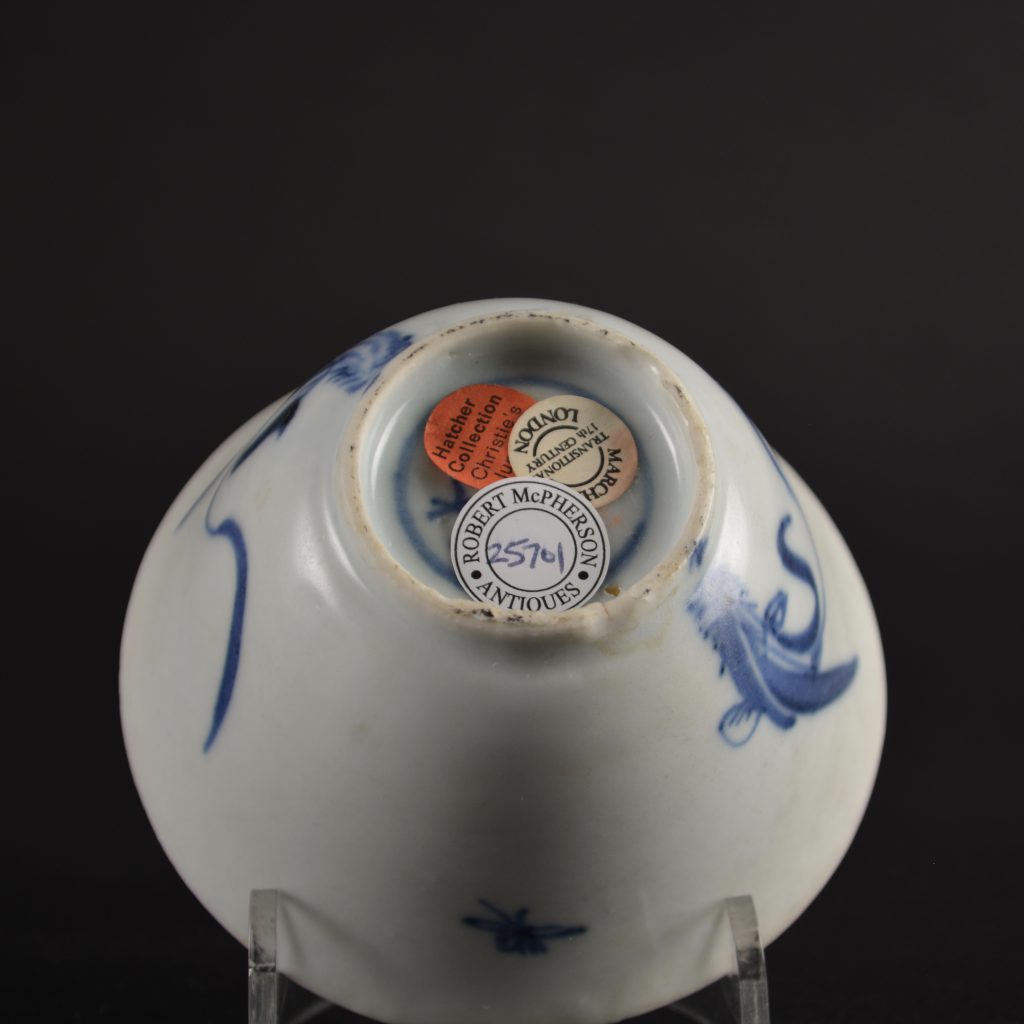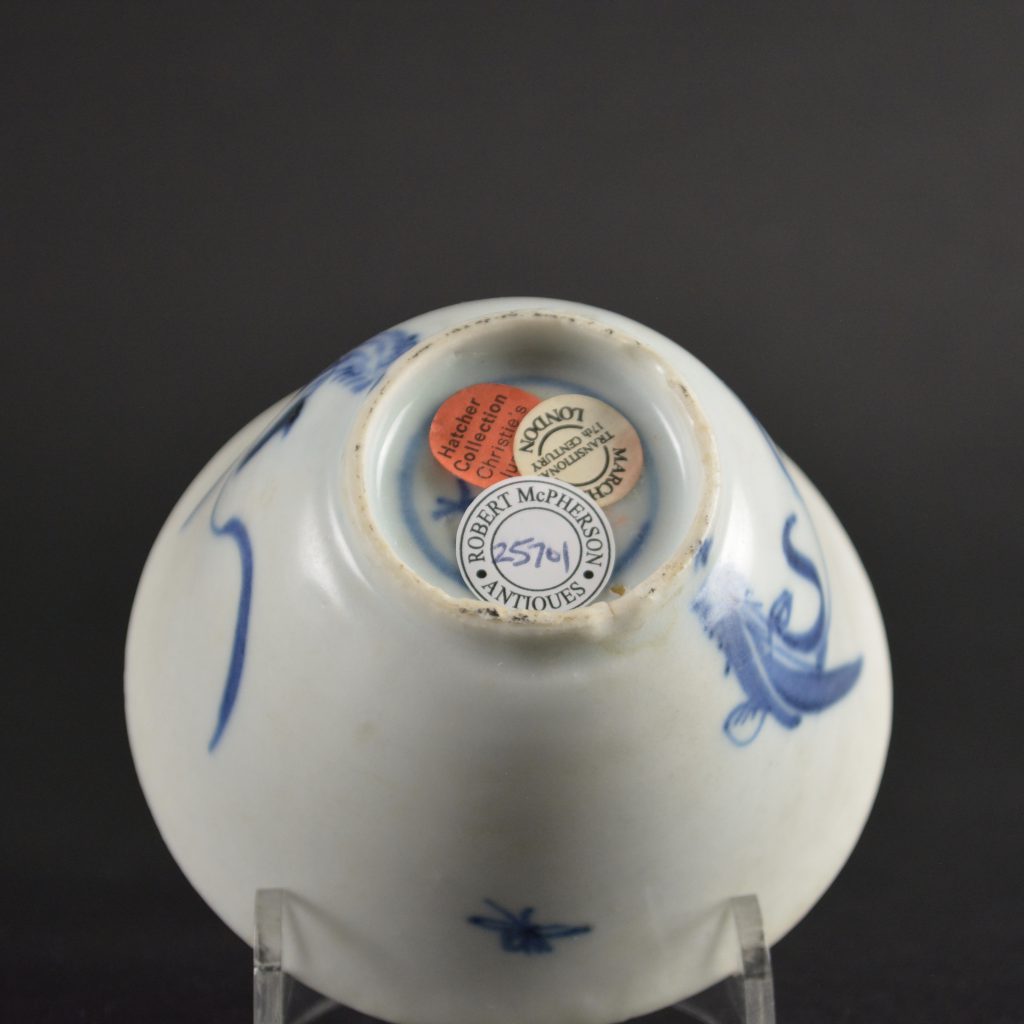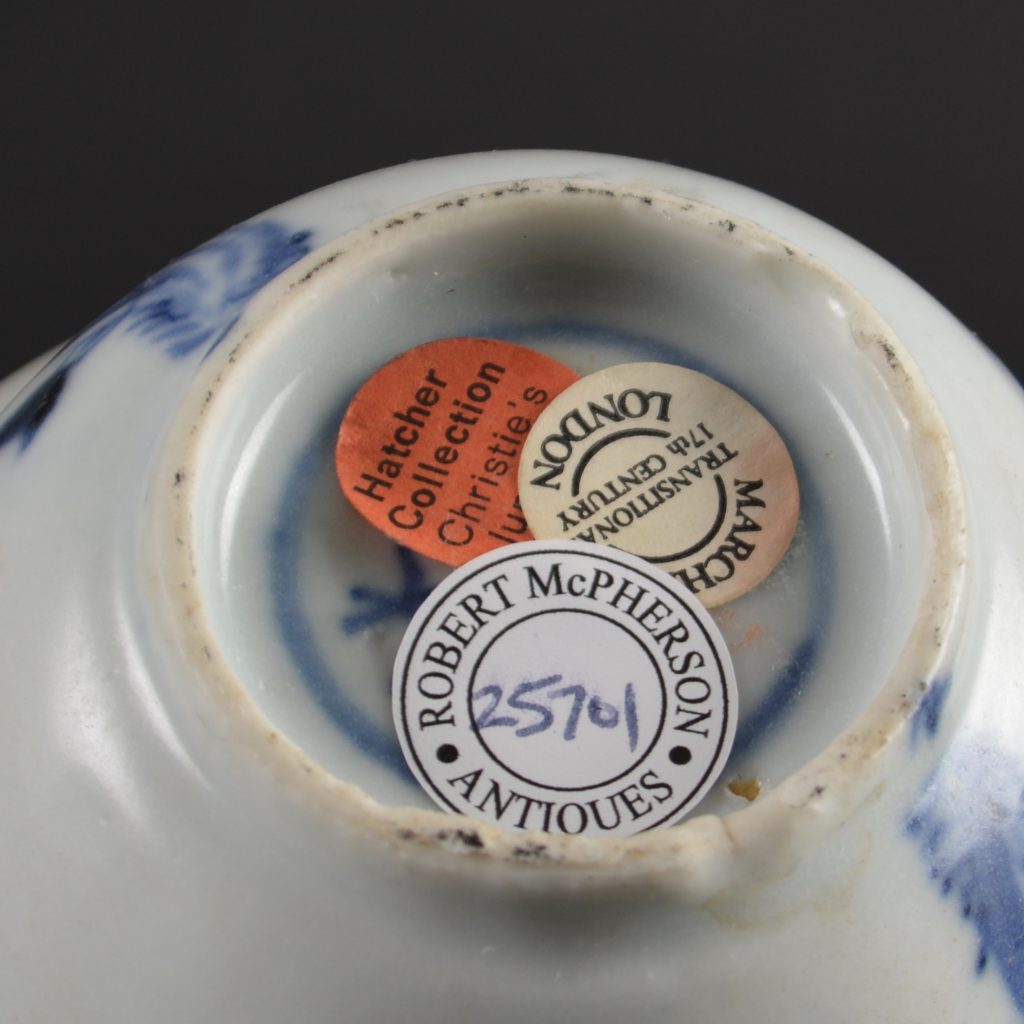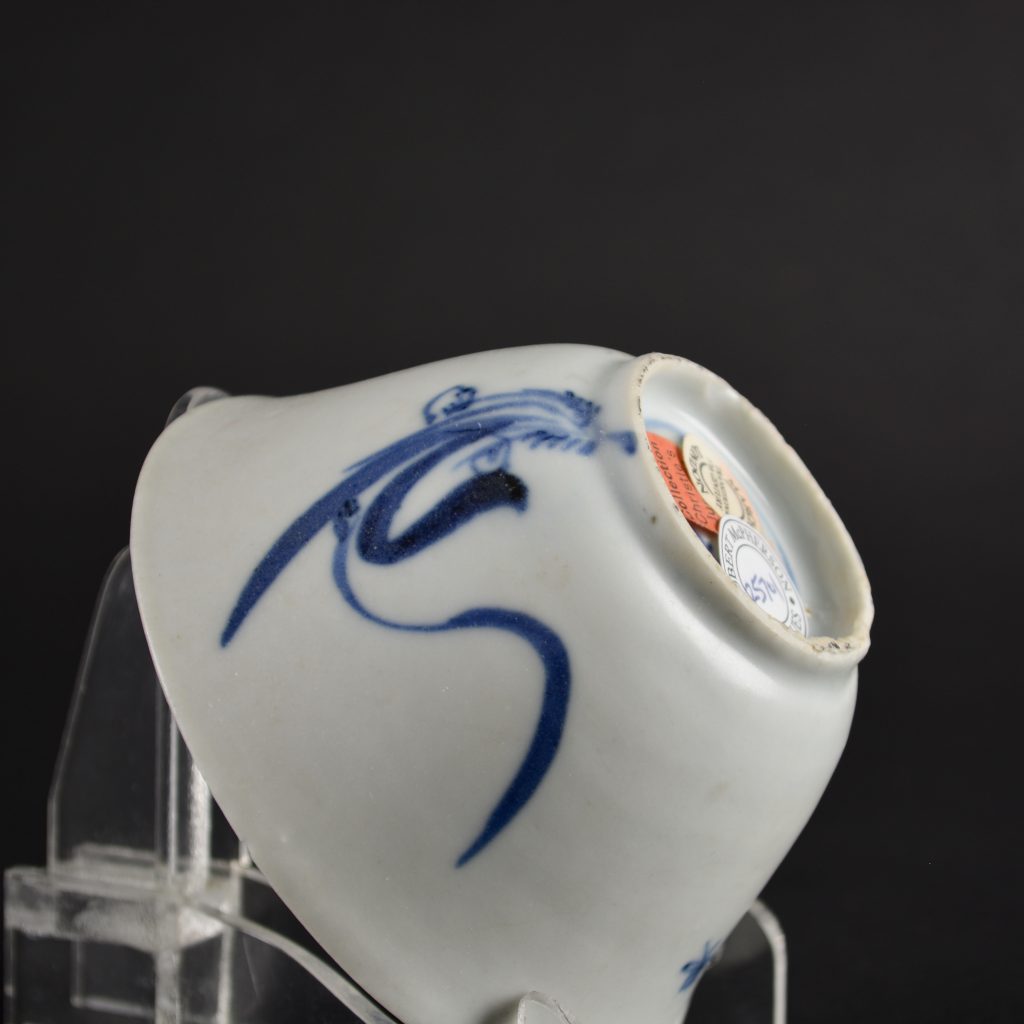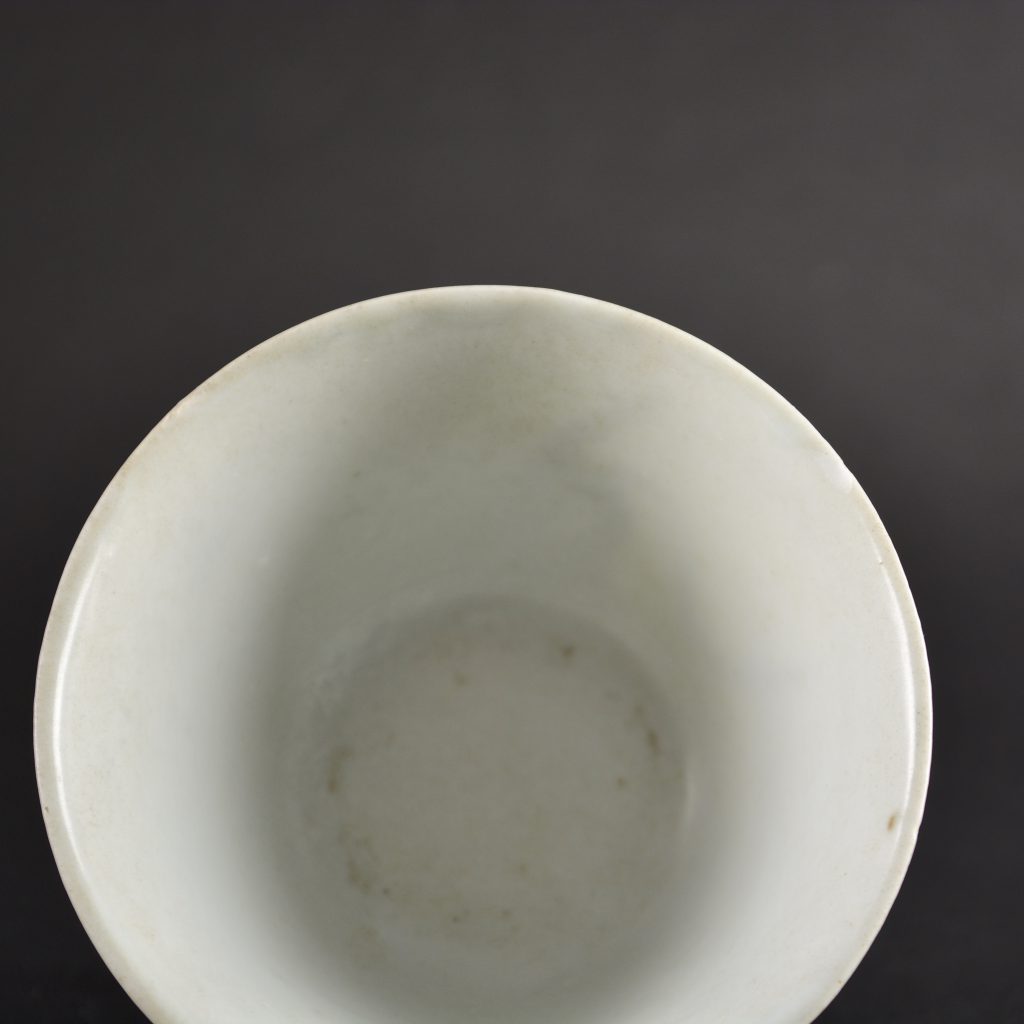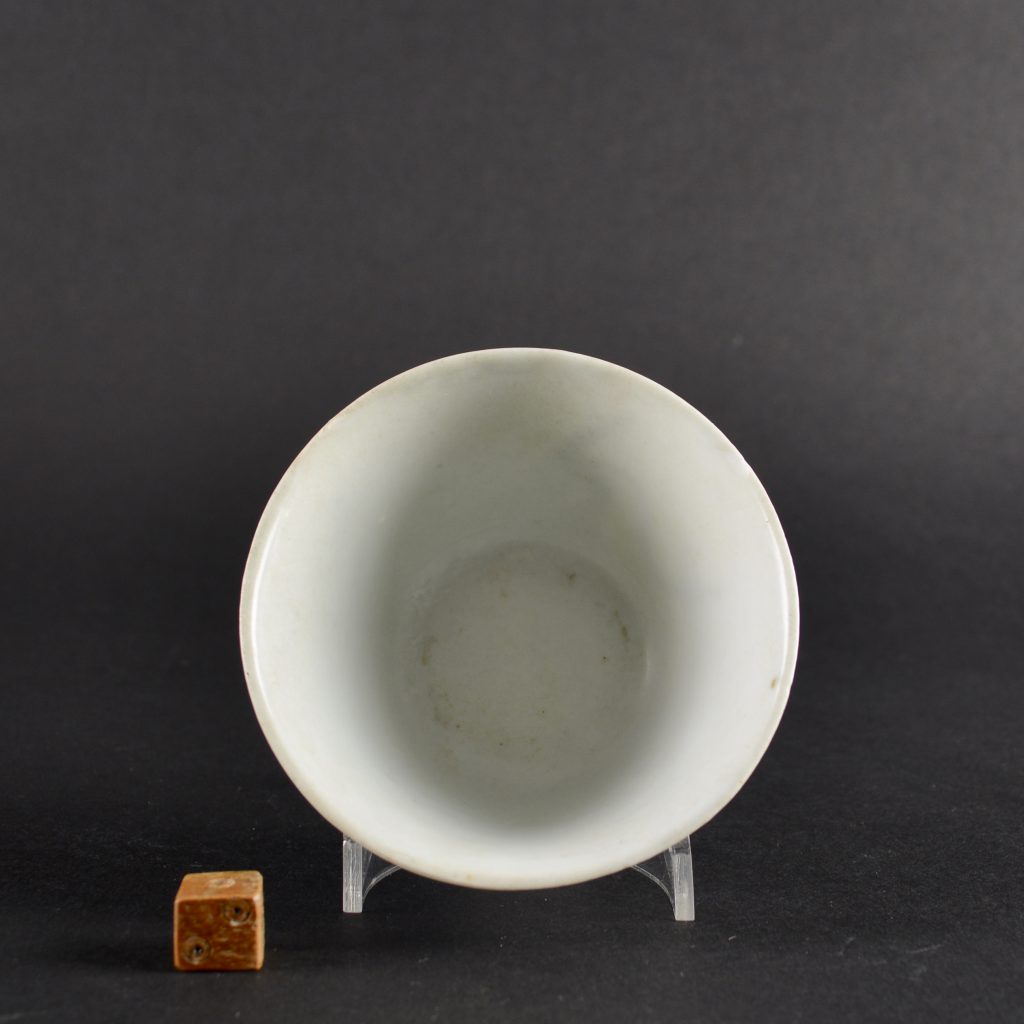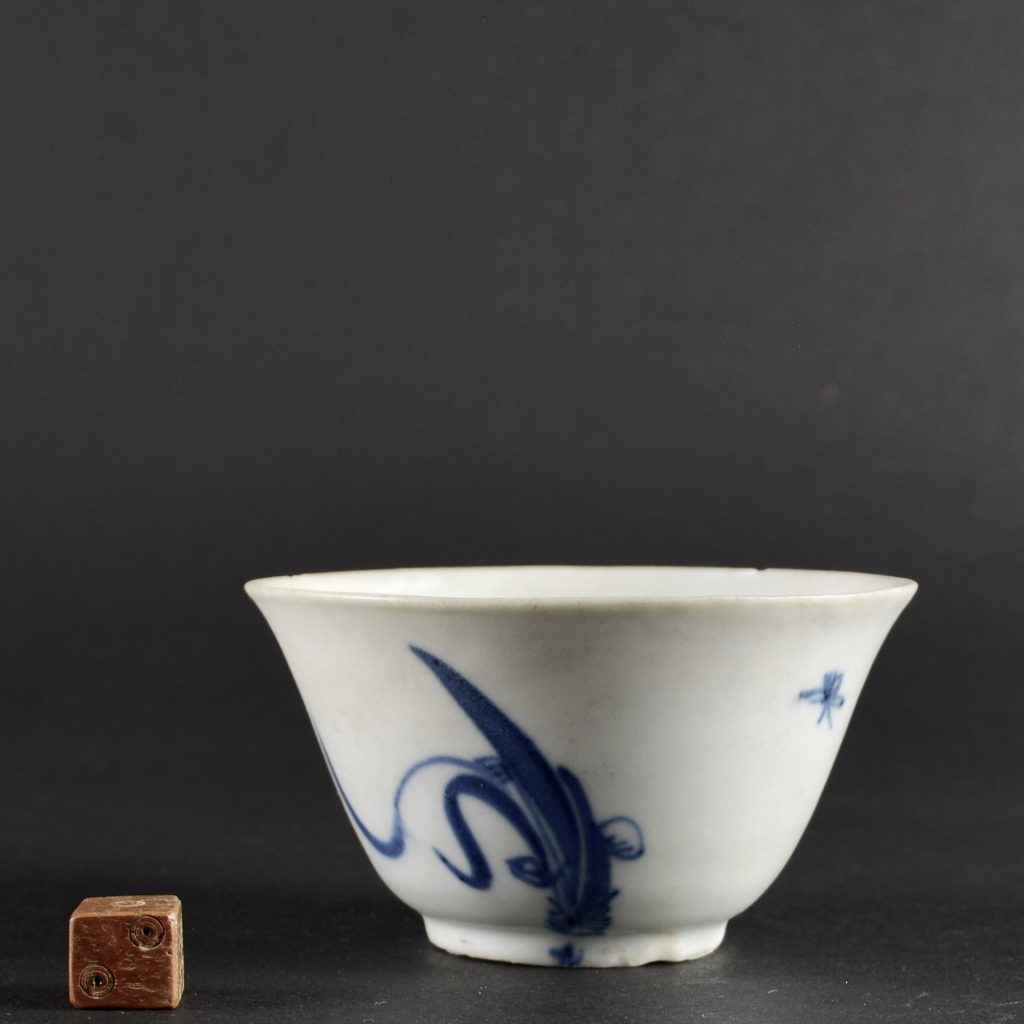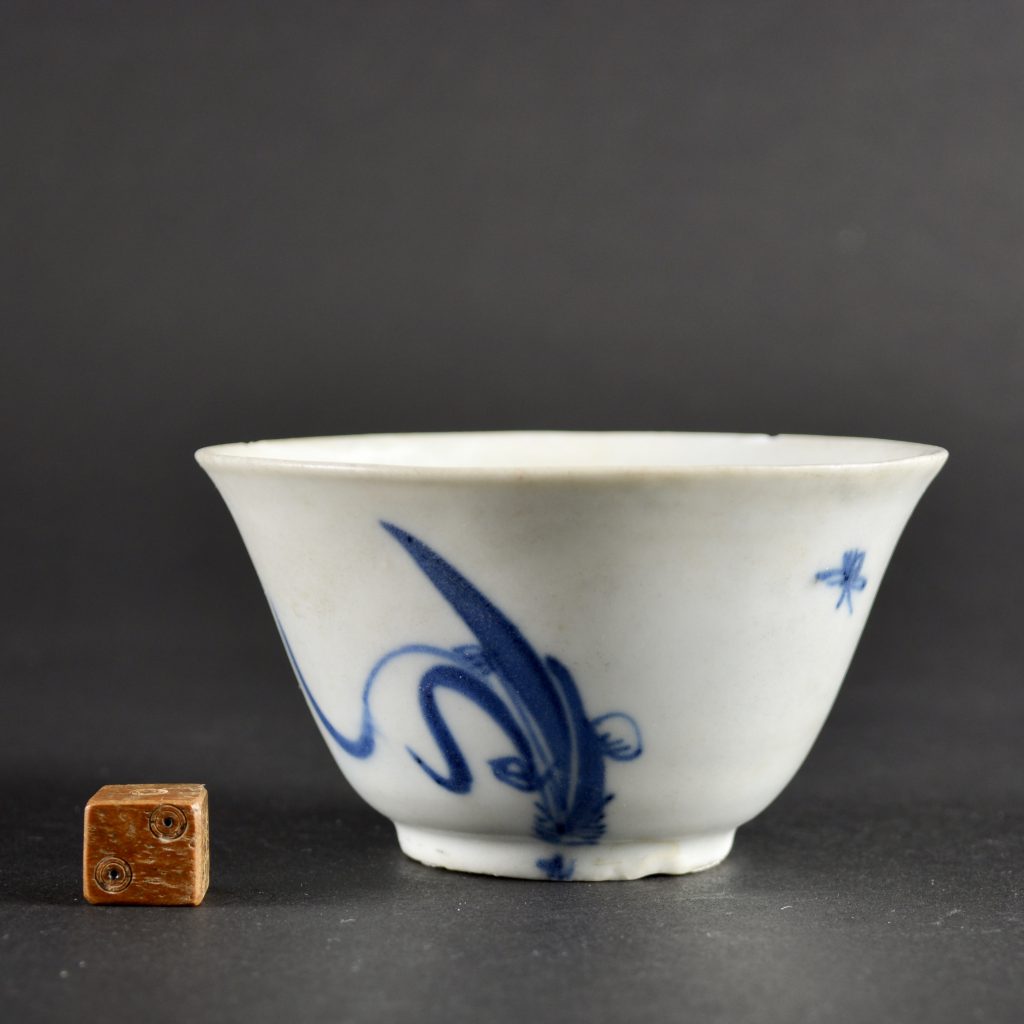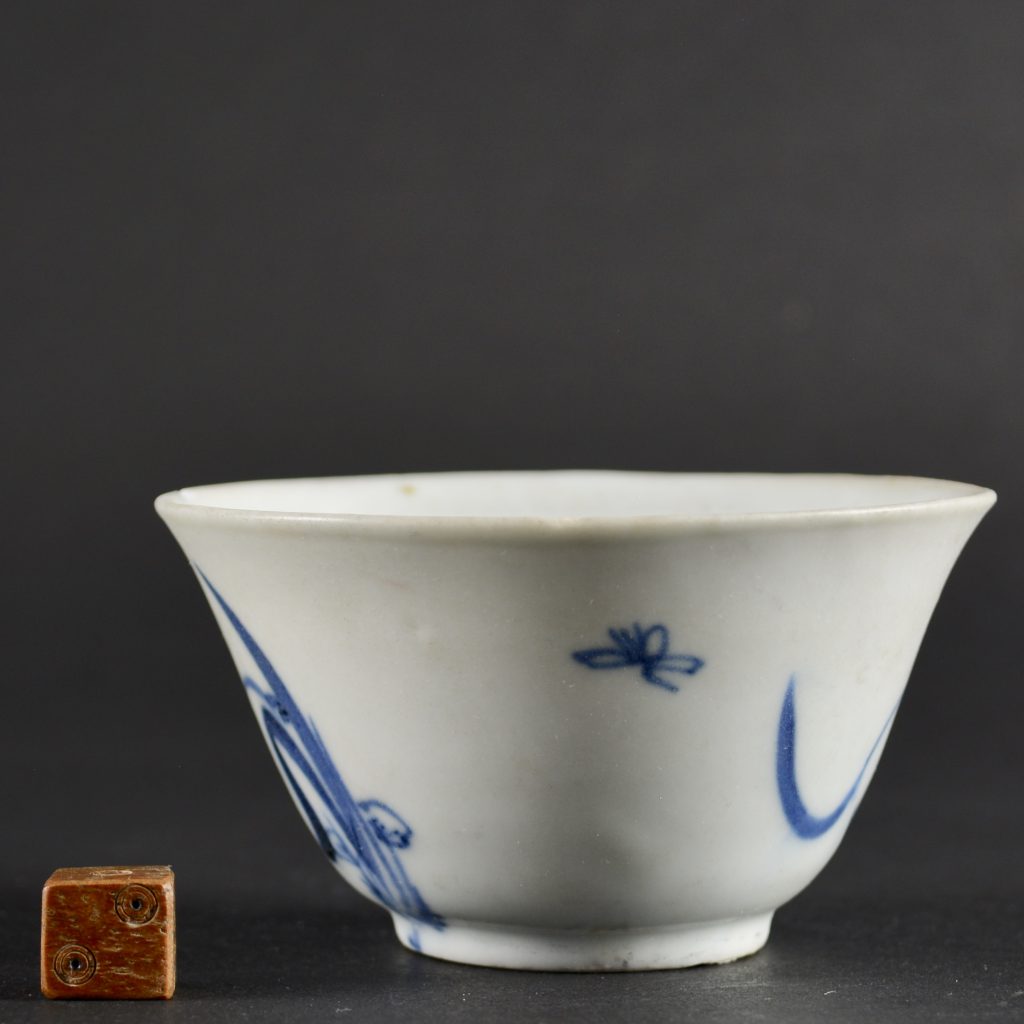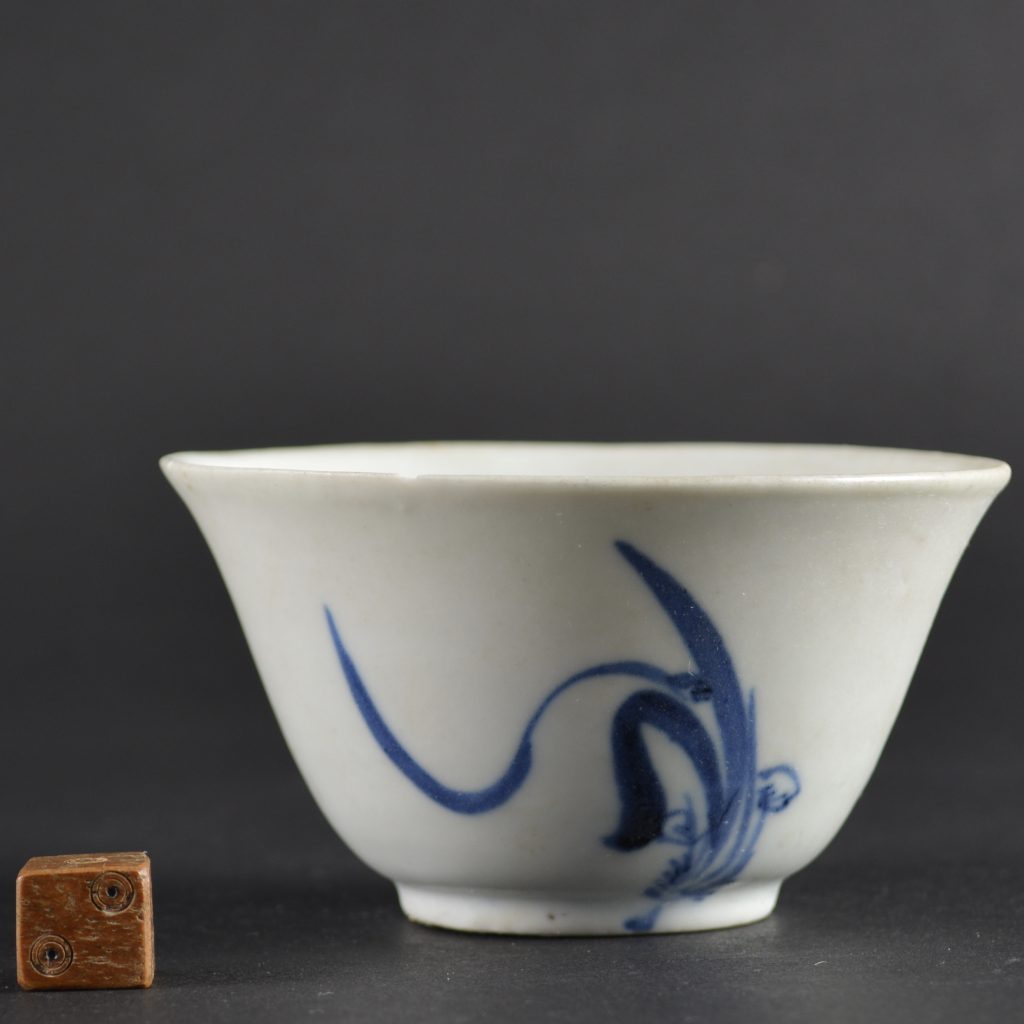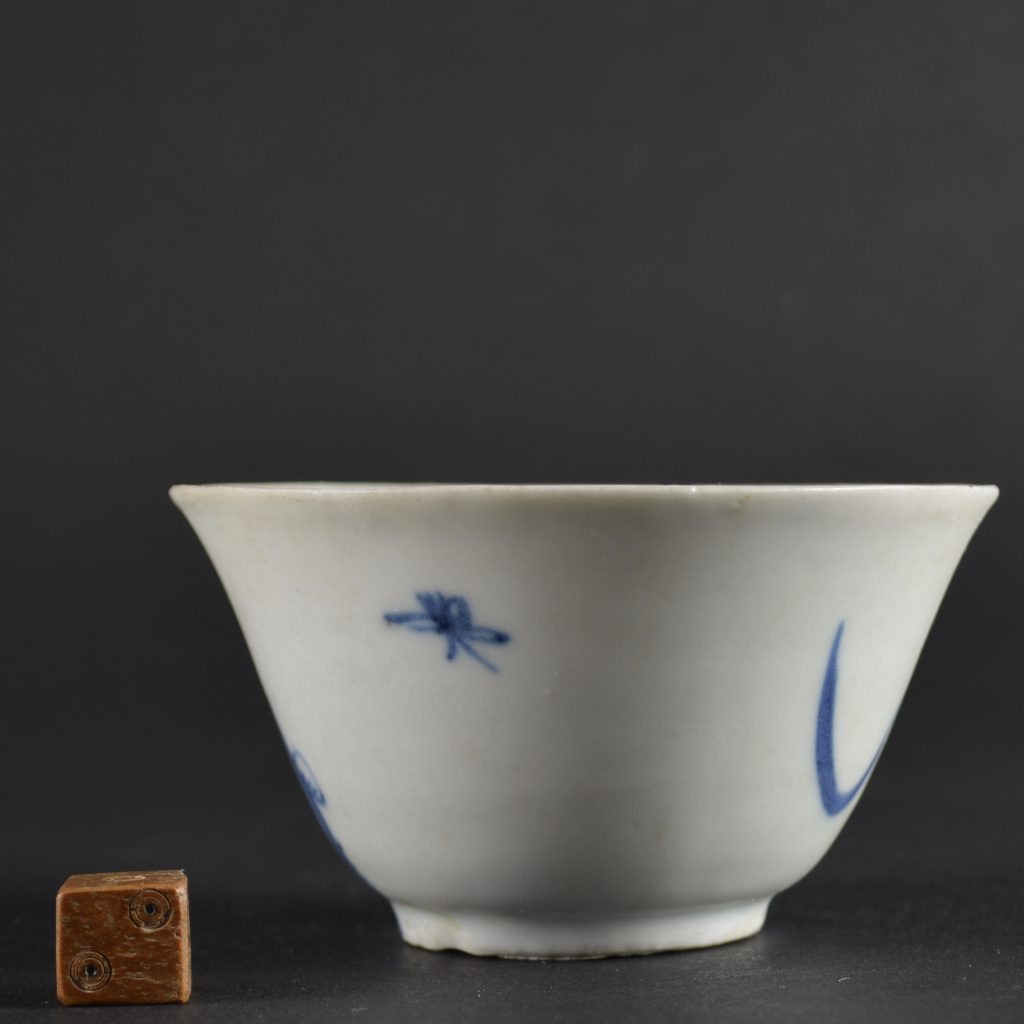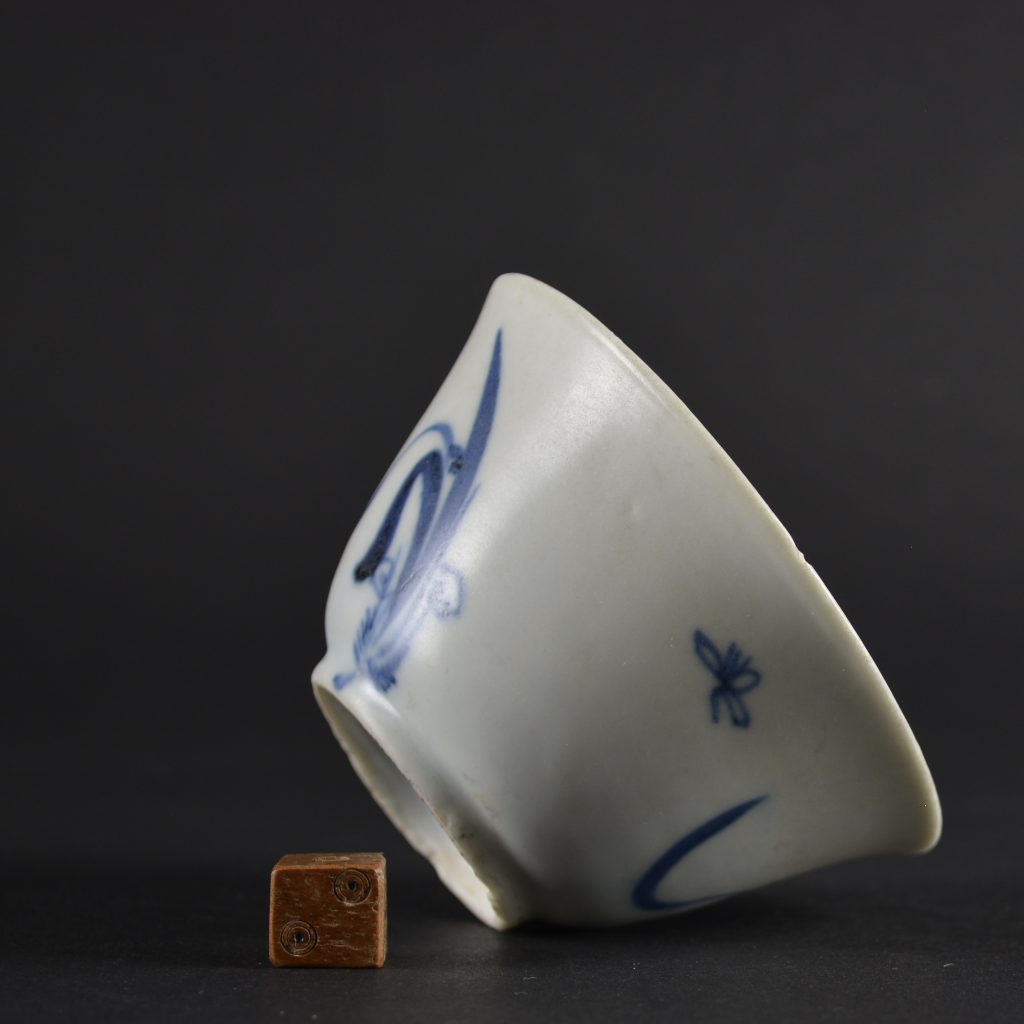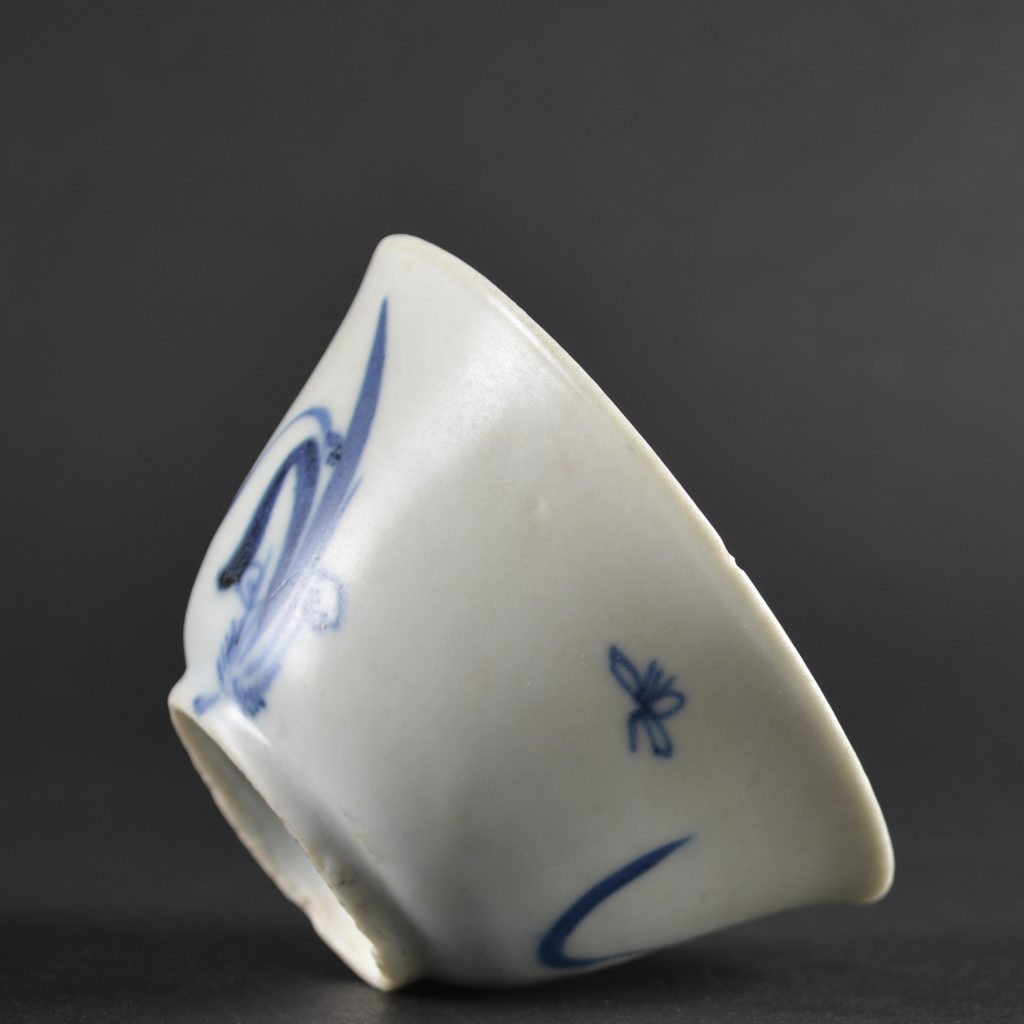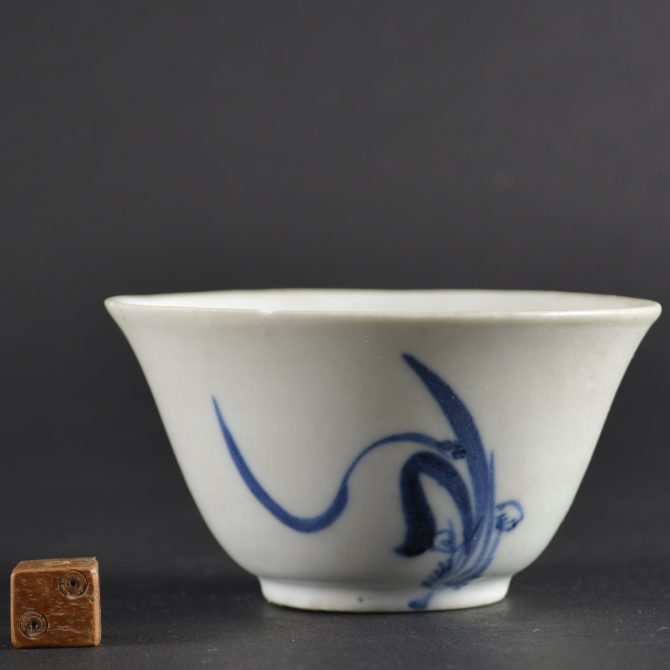
A Transitional Porcelain Bowl From The Hatcher Cargo
A Transitional Porcelain Bowl from the Hatcher Cargo, Late Ming, Chongzhen c.1643. Decorated in Blue and White with a single flowering orchid plant depicted in a calligraphic painting style without using outlines. The base with a apocryphal Ming Chenghua Mark (1465-1487).
SOLD
- Condition
- There is a shallow rim chip c.5 x 2mm a couple of minute glaze chips. The glaze is in good condition.
- Size
- Diameter 8.9 cm (3 1/2 inches) Height 5.2 cm
- Provenance
- Fine And Important Late Ming And Transitional Porcelain, Recently Recovered from an Asian Vessel in the South China Sea. Property of Captain Michael Hatcher. Christie`s Amsterdam 14th March 1984. Label to base. Marchant and Son, Kensignton, London, label to base.
- Stock number
- 25701
- References
- Auction catalogue - Fine And Important Late Ming And Transitional Porcelain, Recently Recovered from an Asian Vessel in the South China Sea. Property of Captain Michael Hatcher. Christie`s Amsterdam 14th March 1984.
Information
Apocryphal Marks
Apocryphal marks are frequently encountered on Chinese porcelain particularly on Kangxi Blue and White Porcelain, the mark of the Ming Emperor Chenghua who reigned from 1465 to 1487 being by far the most common, other Ming marks include Jiajing (1522-1566) and less frequently Wanli (1573-1620). These marks were not added to the piece to deceive, but more as a sign of reverence to earlier potters of the Ming dynasty (1368-1644). Occasionally they are used on pieces copying Ming Porcelain, these objects were probably made for collectors who could not afford the Ming original. Tianqi is an early period for such an apocryphal mark.
Orchids
The natural habitat of Chinese orchids is secluded woodland, it is therefore connected with Confucian and Taoist ideals as well as that of the reclusive scholar. This is because the flower is rather small and they can sometimes only be found by their scent, thus the scholar was not self-seeking ; only his deeds and writings were to bring him notice. The orchid also symbolizes moral virtue.
The Hatcher Cargo :
The Hatcher Cargo was the first porcelain cargo from a shipwreck to come on to the market. It was sold in several auctions in Christie`s Amsterdam in 1984 and 1985. It remains one of the most important cargoes of shipwreck ceramics ever recovered, despite the lack of historical evidence recorded by the salvage team. Two porcelain covers dated 1643 helped date the wreck but this needed corroborating to give a firm date of the wreck and it`s cargo.
The dating of the porcelain from the Hatcher Cargo is based on several elements. Firstly, the ceramics recovered form a coherent group, in other words they appear to all have been made at the same time. Secondly comparative dating was used to corroborate the date of the porcelain. For example, blue and white porcelain dishes decorated with a coiled serpent recovered from the Hatcher Cargo match an important dish from the fall of the Ming dynasty, formerly in the Percival David Foundation, now at the British Museum London, this dish can be dated to 1644 - 1645.
Other comparative dating is also consistent with the presumed date of the porcelain. However, the most important dating reference remains the two covers recovered from the wreck datable by inscription to the spring of 1643. Although the Ming dynasty officially ended in 1644 the transition from the Ming to the beginning of the Qing was messy and protracted. The porcelain made during this period of civil war and chaos is referred to as `Transitional Porcelain`. It covers the period from the last Ming Emperors until the early years of the Kangxi period, which is normally given a date of about 1620 to 1670 . The Hatcher Cargo is a vital dating tool for this previously poorly understood period of Chinese porcelain production.
